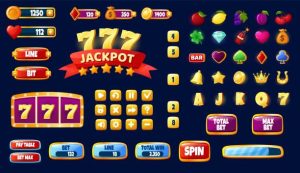Solar vs. Wind Power: Which Renewable Energy Source Is Right for You?
As the world shifts towards greener energy alternatives, solar and wind power have emerged as two of the most prominent renewable energy sources. Both offer significant environmental benefits by reducing carbon emissions and reliance on fossil fuels, but choosing between solar and wind power depends on various factors. Whether you’re a homeowner looking to reduce energy costs, a business aiming for sustainability, or simply exploring eco-friendly solutions, this article will help you decide which renewable energy source—solar or wind—is the best fit for you.
Understanding Solar Power
Solar power is harnessed from the sun’s energy using photovoltaic (PV) panels, which convert sunlight into electricity. It is a reliable, scalable, and accessible energy source that works well for both residential and commercial applications. Solar panels can be installed on rooftops, ground mounts, or even as part of building materials like solar glass.
Advantages of Solar Power:
- Abundant and Reliable: The sun shines every day, making solar energy a highly predictable and reliable power source, especially in regions with ample sunlight.
- Low Maintenance: Once installed, solar panels require minimal maintenance. They have no moving parts, reducing the risk of mechanical failures.
- Scalability: Solar power systems can be customized to suit various energy needs. Whether you need panels for a small home or a large-scale business, solar energy is flexible.
- Government Incentives: Many countries offer tax credits, rebates, and other incentives for solar energy adoption, making it more affordable for consumers to go solar.
- Energy Independence: Solar power allows users to generate their own electricity, reducing dependency on the grid and insulating them from energy price fluctuations.
Disadvantages of Solar Power:
- Intermittent Energy: Solar power is dependent on daylight. Energy production drops at night or during cloudy weather, requiring backup solutions like battery storage or grid connection.
- High Initial Costs: While prices for solar panels have dropped significantly, the upfront installation costs can still be a barrier for some. However, over time, the savings on electricity bills often outweigh the initial investment.
Understanding Wind Power
Wind power is generated using wind turbines that capture kinetic energy from the wind and convert it into electricity. Wind energy is most commonly used in large wind farms, but small-scale turbines are also available for individual homeowners or businesses.
Advantages of Wind Power:
- Efficient in Windy Areas: Wind power is highly efficient in locations with consistent wind, such as coastal areas or open plains.
- Constant Power Generation: Unlike solar, which is restricted to daylight hours, wind turbines can generate electricity 24/7 as long as there is wind.
- Minimal Space Requirement: While large wind farms take up significant space, small residential wind turbines require relatively little land. Additionally, wind turbines can be installed offshore to reduce their land footprint.
- Low Operating Costs: Once a wind turbine is installed, operational costs are minimal, making it a cost-effective long-term energy solution.
Disadvantages of Wind Power:
- Inconsistent Energy Production: Wind is variable, and turbines require a steady breeze to generate energy. In areas with low or inconsistent wind speeds, wind power may not be viable.
- Higher Maintenance: Wind turbines have moving parts, which increases the likelihood of mechanical issues over time. They require regular maintenance to function properly.
- Noise and Aesthetic Concerns: Wind turbines can generate noise, and some people find their appearance obtrusive. This may be a consideration for residential installations.
- Initial Installation Costs: Like solar, wind power systems can have high upfront costs, particularly for larger turbines or wind farm setups.
Solar vs. Wind Power: Key Factors to Consider
When choosing between solar and wind power, several factors should be taken into account:
1. Location
Your geographic location plays a major role in determining which renewable energy source is right for you. Solar power is ideal for areas that receive ample sunlight year-round, such as California, Arizona, or Southern Europe. Wind power, on the other hand, is more suited to regions with consistent winds, such as coastal areas, the Great Plains in the U.S., or the UK.
2. Space Requirements
Solar panels can be installed on rooftops, making them suitable for urban areas with limited space. Wind turbines require more space and may not be ideal for densely populated residential neighborhoods. If you have a large plot of land or live in a rural area, wind power may be more feasible.
3. Energy Needs
Both solar and wind power systems can be scaled to meet your energy needs, but consider how much energy you use daily. If your energy usage peaks during the day when the sun is shining, solar power may be a better fit. For businesses or homes that need consistent energy production day and night, wind power may be more advantageous.
4. Cost and Budget
While both solar and wind systems can have high upfront costs, government incentives and programs can help offset these expenses. Many energy providers, such as Octopus Energy, also offer special programs and referral discounts to make renewable energy more affordable. Using an Octopus Energy referral can give you a financial incentive when switching to greener energy solutions, whether it’s solar or wind power.
5. Maintenance
Solar panels typically require less maintenance than wind turbines. If you prefer a low-maintenance option, solar may be the better choice. However, if you’re comfortable with occasional turbine maintenance and live in a windy area, wind power could provide higher energy yields.
The Hybrid Approach: Combining Solar and Wind Power
For those who live in areas where both sunlight and wind are abundant, a hybrid energy system that combines solar and wind power may be the best option. Hybrid systems can provide continuous energy production, with solar panels generating power during the day and wind turbines taking over at night or during cloudy periods. This approach reduces reliance on backup power sources and maximizes energy efficiency.
The Role of Energy Providers: How Octopus Energy Can Help
Switching to renewable energy is easier when you partner with an energy provider committed to sustainability. Octopus Energy, for instance, is a leader in the renewable energy market, offering affordable and eco-friendly energy plans to households and businesses. Their focus on clean energy, coupled with transparent pricing, makes it easier for consumers to make the switch.
If you’re considering solar or wind energy, signing up with Octopus Energy through a referral can offer you credits toward your energy bills, making the transition to renewable energy even more affordable. This helps you not only reduce your environmental impact but also enjoy cost savings in the long run.













